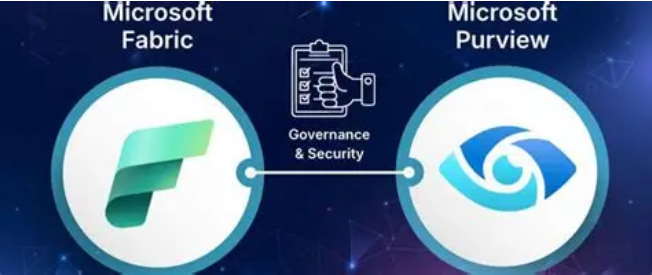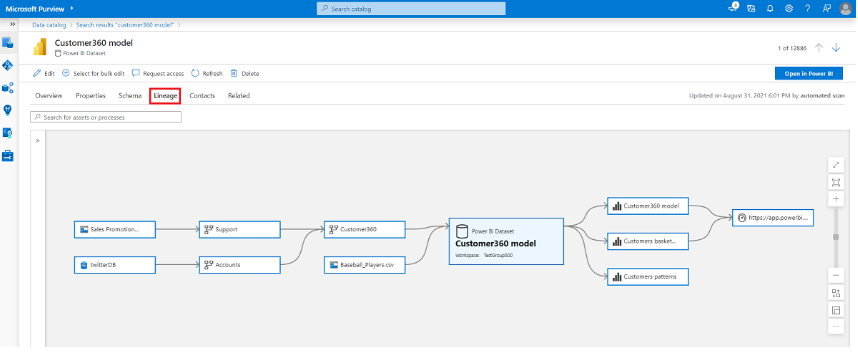Microsoft Fabric’s Defining Moment for Responsible AI
Las Vegas became the hub of data transformation as the Microsoft Fabric Community Conference 2025 gathered global data and AI leaders from March 31 to April 2.
With 200+ sessions, 13 focused tracks, and 21 hands-on workshops, the event was a powerful signal of how quickly Microsoft Fabric is evolving from an analytics platform into the trusted operating layer for enterprise AI.
The standout theme this year was clear — AI innovation must be built on governance and security that scale together.
From the keynote stage to technical deep-dives, Microsoft positioned Fabric and Purview as the converged foundation for AI-ready, responsible data ecosystems.
“AI transformation isn’t about building faster models — it’s about building safer ones.”
— Gaurav Agarwal
Microsoft Purview: Built to Safeguard AI Innovation
AI is already woven into everyday enterprise workflows — Microsoft research shows that 75 percent of knowledge workers now use AI tools daily.
At the same time, 69 countries are shaping more than 1,000 AI-related policy frameworks, defining the guardrails for responsible use.
In this environment, Microsoft Purview serves as the unifying layer for data security, governance, and compliance.
It bridges security and data teams, turning governance into a shared practice rather than a gated function.
At FabCon 2025, Microsoft announced a series of innovations that make Purview not only a governance platform but also the foundation for trust-first AI.
My Pick of Top Announcements: Turning Governance into Intelligence
1. Data Loss Prevention (DLP) for Fabric Lakehouse — Generally Available
Purview DLP now operates natively inside the Fabric Lakehouse. When sensitive or personally identifiable information (PII) is detected, external access can be automatically restricted — bringing the familiar Microsoft 365 DLP experience to the data layer.
“Innovation thrives on open data, but openness without boundaries invites risk. DLP at the lakehouse level turns trust from policy into architecture — giving teams the freedom to create, safely.”
— Gaurav Agarwaal
Technical Deep Dive
- DLP policies now scan Fabric assets (semantic models, lakehouse tables, files) to enforce alerts, policy tips, or access restrictions.
- Configured via Purview Portal → Data Loss Prevention → Create Policy → Fabric & Power BI Workspaces.
- Integrated with Microsoft Information Protection (MIP) labels for unified classification across documents and datasets.
- As of Oct 2025, GA support covers all Fabric Lakehouse regions; fine-grained table-level lineage scanning is in rollout.
2. Expanded DLP Policy Tips for KQL and Mirrored Databases (Preview)
Purview now extends DLP to Kusto Query Language (KQL) databases and mirrored sources such as Azure SQL, Cosmos DB, and Snowflake.
Analysts see real-time policy tips when queries touch sensitive data — governance built into the moment of use.
“Real progress happens when protection feels invisible. Policy-aware queries make responsibility a default, not a disruption.”
— Gaurav Agarwaal
Technical Deep Dive
- Extends Fabric DLP to KQL databases and mirrored data sources (Azure SQL, Cosmos DB, Azure Managed Instance, Databricks Unity Catalog, Snowflake).
- Policy tips surface in Fabric Studio UX; actions can warn, block, or allow override.
- Uses Purview’s sensitivity metadata and telemetry for inline detection without query latency impact.
- Cross-tenant preview expands in Q4 2025 to cover multi-region workspaces with Fabric OneLake governance.
3. Microsoft Purview for Copilot in Fabric (Preview)
Purview integration with Copilot in Fabric — starting with Power BI — enables Data Security Posture Management (DSPM) for AI. Admins can detect sensitive data in prompts and responses, review risk insights, and apply automated mitigations.
“AI assistants will soon power every workflow. The real milestone isn’t capability — it’s confidence. Trust must be built into every conversation they have.”
— Gaurav Agarwaal
Technical Deep Dive
- DSPM for AI monitors prompt/response flows within Copilot for Fabric using Purview’s content inspection engine.
- Integrated with Insider Risk Management and Defender for Cloud Apps for contextual alerting.
- Copilot interactions inherit enterprise-wide Audit, eDiscovery, and Retention policies.
- Adds Purview roles: AI Administrator and Data Security AI Viewer for segregated AI oversight.
- Oct 2025 roadmap: support for Fabric Notebooks and Copilot in Dataflow Gen2.
4. Data Observability in the Purview Unified Catalog (Preview)
Purview’s new Data Observability capability brings end-to-end visibility to lineage, quality, and dependencies across domains and business glossaries.
Governance becomes continuous and quantifiable — not a retroactive audit.
“Governance once meant control; now it means clarity. Observability turns trust into something you can see, measure, and improve.”
— Gaurav Agarwaal
Technical Deep Dive
- Unified Catalog introduces metrics for data quality, domain health, and dependency impact.
- Lineage graphs map upstream/downstream flows across Fabric workspaces.
- Critical Data Elements (Preview) link key fields to business glossaries and policies.
- Observability API allows integration with CI/CD pipelines and monitoring dashboards.
- Q4 2025 adds data quality scorecards and alerting on drift in AI training data.

Unified Theme: Seamlessly Secure and Confidently Activate
Together, these innovations represent Microsoft’s next leap in merging governance and intelligence.
Purview ensures data security and compliance; Fabric unifies data for analytics and AI.
The result is a single, governed ecosystem where protection, lineage, and accountability travel with the data itself — from ingestion to inference.
“In the AI era, trust isn’t a wrapper around innovation — it’s the framework that keeps it upright.”
— Gaurav Agarwaal
Product Roadmap: Trust as the Next Platform Capability
Microsoft’s updated roadmap shows trust evolving into a platform function:
- Broader DLP coverage across Fabric and non-Fabric sources.
- AI-risk signals enriched with behavioral analytics and data sensitivity scoring.
- Expanded integration with Defender, Copilot Studio, and Entra Conditional Access Policies.
- Unified Catalog APIs, trust dashboards, and exportable lineage views for cross-platform governance.
“Every enterprise wants to scale AI. The true differentiator is who can scale it without losing integrity.”
— Gaurav Agarwaal
What CXOs Should Do Next (Prescriptive)
- Unify Security and Governance: Build a cross-functional Trust Office spanning InfoSec, Data, and AI.
- Deploy DLP Strategically: Start with high-value workspaces; quantify exposure reduction.
- Operationalize Copilot Governance: Treat AI assistants as governed users; monitor prompt sensitivity trends.
- Activate Observability: Mandate lineage and quality dashboards pre-model deployment.
- Measure Trust: Add data-trust KPIs to board dashboards — label coverage, mean time to detect, model lineage completeness.
Final Thoughts: From Compliance to Confidence
FabCon 2025 marked a turning point — governance has moved from the back office to the boardroom.
Microsoft Purview’s trajectory proves that responsible AI isn’t about slowing innovation; it’s about building trust into its core design.
“The enterprises that embed governance into design — not review — will define the next decade. Because in this race, trust isn’t the brake; it’s the engine.”
— Gaurav Agarwaal
Views: 3.9K

